MAS*H didn’t just entertain audiences—it revolutionized what television could achieve. Over its eleven-season run, certain episodes transcended entertainment to become cultural phenomena, drawing unprecedented viewership and critical acclaim. These ten episodes represent the pinnacle of the series, combining sharp writing, powerful performances, and emotional depth that television had rarely attempted before.
- “Goodbye, Farewell and Amen” – The Record-Breaking Finale
The series finale aired on February 28, 1983, and shattered every television record imaginable. With 105.9 million viewers, it remained the most-watched television broadcast in American history for nearly three decades. This two-and-a-half-hour event wasn’t just popular—it was a national moment of collective mourning and celebration.
The episode’s power came from its unflinching portrayal of war’s psychological toll. Hawkeye’s mental breakdown, triggered by a repressed memory of a tragic incident involving a Korean woman and her baby, represented television’s boldest exploration of trauma. The final scene, where characters silently say goodbye as helicopters lift off, left audiences weeping worldwide. Even today, mentioning this finale to MAS*H fans evokes visceral emotional responses.
What made this episode extraordinary was its refusal to provide easy closure. BJ’s message to Hawkeye—”GOODBYE” spelled out in stones—captured the bittersweet nature of endings. The war was over, but the scars remained. This honesty about the lasting impact of trauma was revolutionary for 1980s television.
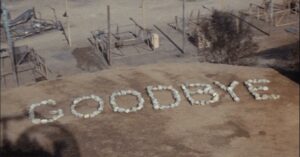
2. “Abyssinia, Henry” – The Death That Shocked America
When Lieutenant Colonel Henry Blake’s plane was shot down over the Sea of Japan, television changed forever. This Season 3 finale demonstrated that MAS*H would not protect viewers from war’s randomness and cruelty. Henry survived the entire war only to die minutes from home—a gut-wrenching reminder that survival is never guaranteed.
The episode’s genius lay in its execution. The cast wasn’t told about Henry’s death until filming the final scene, so their shocked reactions were genuine. Gary Burghoff’s delivery of the news, stumbling through the announcement while the surgical team works in stunned silence, remains one of television’s most powerful moments. No music, no dramatic pauses—just the brutal reality of loss.
This episode earned a 60.2 rating and 77 share, meaning 77% of all televisions in use that night were tuned to MAS*H. Audiences were devastated, angry, and profoundly moved. CBS received thousands of letters, many expressing outrage at Henry’s death, but the episode’s impact proved that television could deliver emotional experiences as powerful as any film.

3. “The Interview” – Breaking the Fourth Wall
This black-and-white documentary-style episode featured a fictional reporter interviewing the 4077th staff about their experiences. Shot to look like authentic Korean War footage, it broke every conventional television rule. Characters spoke directly to camera, sharing intimate thoughts and memories that revealed their deepest fears and hopes.
The episode’s documentary format allowed actors to explore their characters with unprecedented depth. Alan Alda’s Hawkeye discussed the absurdity of saving lives while surrounded by death. Loretta Swit’s Margaret revealed vulnerability beneath her tough exterior. The format’s authenticity made viewers feel like they were witnessing real history, not scripted drama.
Critics praised this experimental approach, and audiences responded with a 46.7 rating. The episode demonstrated that MAS*H could reinvent itself while maintaining emotional authenticity. Its influence can be seen in countless mockumentary-style shows that followed.
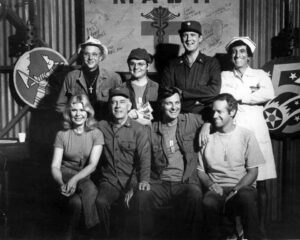
4. “Point of View” – Through a Patient’s Eyes
Season 7’s “Point of View” took an unprecedented approach—telling the entire story from a wounded soldier’s perspective. The camera became the patient’s eyes, showing the 4077th staff from a completely new angle. This technical innovation created an immersive experience that put viewers directly into the chaos of a MASH unit.
The episode’s power came from its vulnerability. We see doctors and nurses not as heroes but as exhausted, frightened people doing impossible work. Hawkeye’s jokes seem more desperate when viewed from a gurney. Margaret’s efficiency reveals her fear. The episode humanized everyone while showing the terror of being helpless and injured.
This artistic risk paid off with a 41.4 rating and widespread critical acclaim. It proved that MAS*H could experiment with form while deepening emotional impact. The episode influenced countless medical dramas that followed, demonstrating new ways to tell familiar stories.
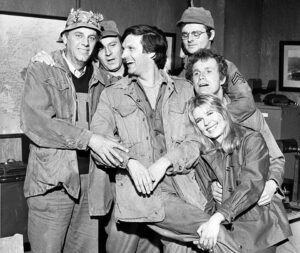
5. “Sometimes You Hear the Bullet” – The First Tears
This Season 1 episode marked MAS*H’s transition from comedy to dramedy. When Hawkeye’s friend Tommy dies on his operating table despite desperate efforts to save him, the series showed that even skilled surgeons lose patients. Hawkeye’s breakdown—crying over Tommy’s body—was television’s first honest portrayal of medical grief.
The episode’s title refers to war’s randomness. Sometimes soldiers hear the bullet that kills them, sometimes they don’t. This philosophical reflection on mortality and chance elevated MAS*H beyond typical sitcom fare. The episode earned a 38.9 rating and established that the series would tackle serious themes without losing its humor.
Critics noted how seamlessly the episode balanced comedy and tragedy. Earlier scenes featured typical MAS*H hijinks, making Tommy’s death even more shocking. This tonal balance became the series’ signature, proving that laughter and tears could coexist authentically.
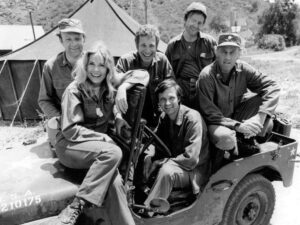
6. “Death Takes a Holiday” – Christmas in Hell
This Season 9 Christmas episode featured the staff desperately trying to keep a wounded soldier alive until after midnight so his family wouldn’t associate Christmas with his death. The premise captured MAS*H’s unique ability to find humanity in horror, showing how small acts of kindness matter even in war’s darkest moments.
The episode’s emotional core came from its ensemble work. Every character contributed to keeping the patient alive, revealing their individual coping mechanisms and shared commitment. Father Mulcahy’s prayers, Hawkeye’s medical skill, and Margaret’s fierce determination combined to create a portrait of community under pressure.
With a 42.3 rating, the episode became one of the series’ most beloved. Its message—that human connection and compassion matter even when circumstances seem hopeless—resonated deeply with audiences facing their own challenges.
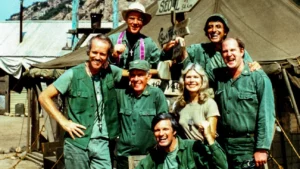
7. “The Bus” – Survival Against Odds
When the 4077th staff’s bus breaks down in enemy territory, this bottle episode stripped away the camp’s safety to explore how these characters function under direct threat. The episode’s tension came from its simplicity—no elaborate plot, just people trying to survive until rescue arrives.
The confined setting allowed character dynamics to shine. Winchester’s elitism crumbled under pressure. Hawkeye’s leadership emerged naturally. Margaret’s military training proved invaluable. The episode demonstrated that MAS*H’s characters were fully realized people, not just comedic types.
This Season 4 episode earned a 39.7 rating by delivering pure suspense. Its success proved that MAS*H could excel in any genre—comedy, drama, or thriller—because its characters felt real.

8. “Dreams” – Surreal Psychology
Season 8’s “Dreams” took viewers inside each character’s nightmares, using surreal imagery to explore their deepest fears. Hawkeye operated on himself. Margaret appeared in a wedding dress covered in blood. The episode’s dreamlike quality allowed the series to visualize psychological trauma in unprecedented ways.
This experimental episode divided audiences but earned a 41.1 rating. Those who embraced its artistic approach found profound insights into characters they thought they knew completely. The episode demonstrated that television could employ cinematic techniques to explore complex psychological territory.
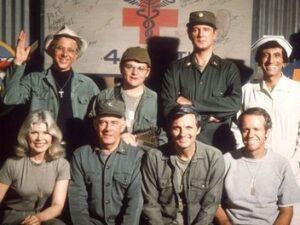
9. “Hawkeye” – The Monologue Episode
After a jeep accident leaves Hawkeye injured and stranded with a Korean family who speaks no English, this episode became Alan Alda’s tour-de-force performance. For 25 minutes, Hawkeye talks to himself, the family, and an unresponsive Korean man, revealing his philosophy, fears, and humanity through continuous monologue.
The episode’s minimalism showcased Alda’s talent and the series’ confidence. No elaborate production, no ensemble cast—just one actor, one setting, and brilliant writing. The 38.4 rating proved that audiences would follow MAS*H anywhere, even into experimental territory.

10. “Welcome to Korea” – The Aftermath of Loss
This Season 4 premiere dealt with the aftermath of Henry Blake’s death by introducing Colonel Potter. The episode’s delicate balance—honoring Henry while introducing a new commander—could have failed spectacularly. Instead, it demonstrated how life continues even after devastating loss.
Harry Morgan’s introduction as Potter was masterful. He didn’t try to replace Henry but instead brought different strengths. The episode’s 42.6 rating showed that audiences trusted MAS*H to navigate difficult transitions with grace and authenticity.
These ten episodes represent MAS*H at its finest—bold, emotional, experimental, and profoundly human. They remind us why the series remains relevant decades after its finale, continuing to influence television and touch hearts across generations.